
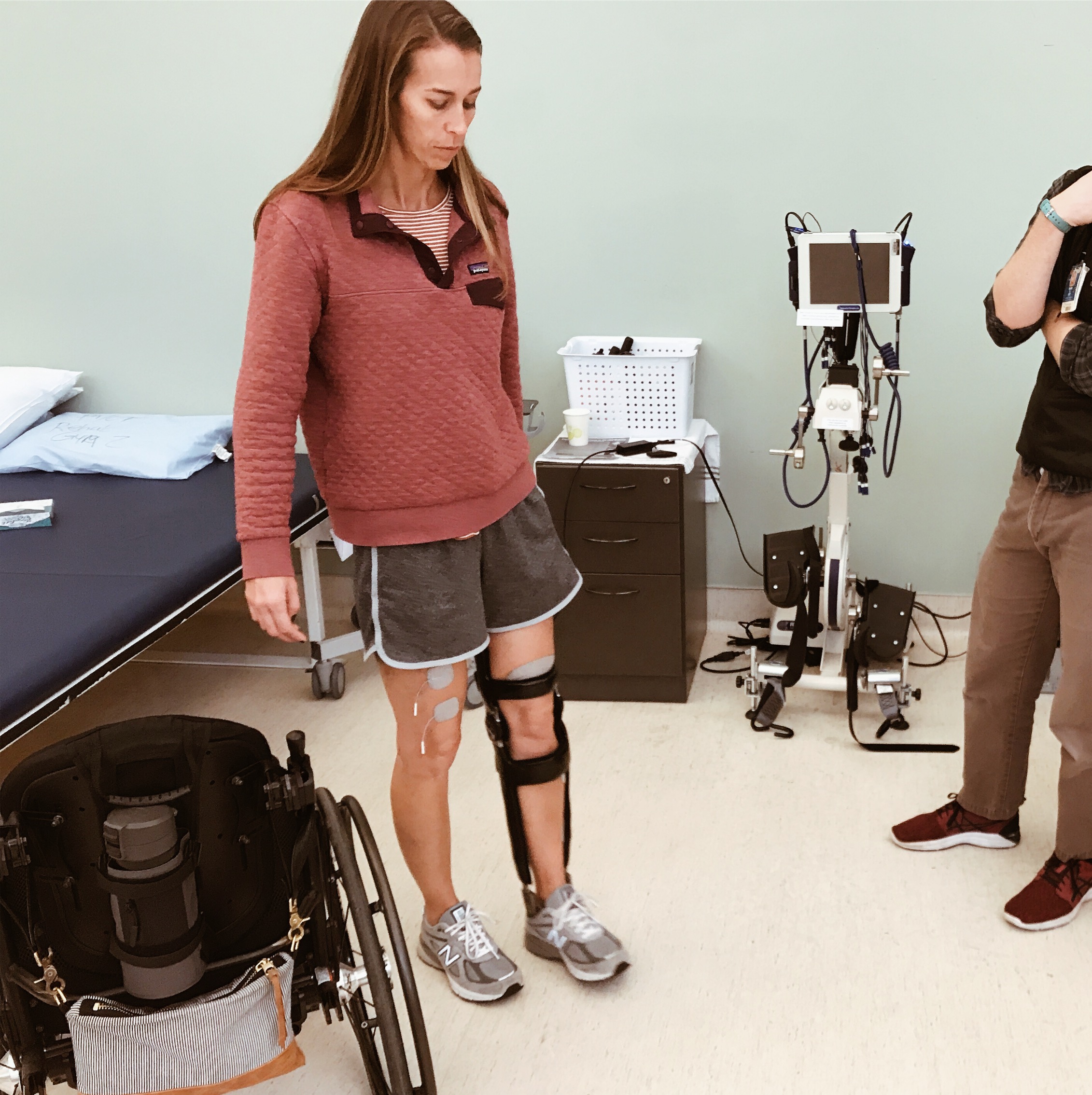
“It’s so good to see you up.”
I brace for it, but still it stings every time.
After months of using my full leg KAFO brace at home I have begun to wear it into some public settings. I enter at a snail’s pace, all eyes on me. I maneuver by swinging from the hip with my left leg wrapped and locked straight in thick strips of titanium and carbon fiber that extend painfully all the way into my shoe and around my foot, giving the illusion of a slow but usable leg.
When I had to begin using a wheelchair I would sit in the car steeling myself for the awkward stares and conversations, praying I wouldn’t meet an obstacle I didn’t know how to navigate. I would only convince myself to exit the car and roll in after an internal reminder that if it felt too uncomfortable I could wheel out as quickly as I went in.
That is not the case when I wear my leg brace. I inch my way in knowing that a retreat will be just as slow. Knowing that I will be treated like someone with two functioning legs. I will be expected to turn on a dime to get out of people’s way in the grocery store. No matter how much someone walking with me slows down, I will still awkwardly be moving even slower. Unlike in the chair when there is an overabundance of assistance offered, very few people will ask me if I need help navigating obstacles such as doors or stairs. No one will ask me if I need a seat.
They are all just so very happy that I am upright. “It’s good to see you up.”
And they are confused that I am not more delighted about this. They are confused when I sit back down.

 “You’re walking now – looking good!” they say. “How long has it been?” they say.
“You’re walking now – looking good!” they say. “How long has it been?” they say.
As each new stage of this journey presents itself I have found responses that help ease the discomfort, because social settings rarely lend themselves to in-depth conversations. In response to these frequent one-liners it would be difficult to explain…
…that when I first got the KAFO brace I could only be upright in it for a few minutes and it has taken months of hard work to be stable enough to navigate a short trip into a public place, and I still have not been designated a “community ambulator” by my physical therapist.
…that when I am in the brace I am in more pain than when I am in the chair and that the longer I wear it during the day the more muscle spasms keep me from sleeping at night.
…that I have fallen flat on my face and on my back in this brace and instead of glorying about being 5’9” again I am mostly just concentrating and praying that I don’t end up with my head on the pavement in front of everyone.
…that after almost a year of neuromuscular rehabilitation at an excellent outpatient program, this may be close to as good as it gets, and if there is more progress that will also present hurdles that are as emotionally and physically difficult as standing before them in this brace.
…that I have not been miraculously healed but thanks to good insurance and helpful doctors and physical therapists I have been equipped with equipment and therapy that has helped me to adapt and have access to several different mobility aids that I use interchangeably depending on the situation in order to minimize pain, promote recovery, stay safe, and retain my personhood and role as a mother, wife, friend, woman.
…that although there are always hard things about using the chair, and the initial transition to being in it was more difficult than I can explain – this country is very accessible and I can cover a lot of ground in it which I cannot say the same for with the brace at this point.
…that when I enter a situation in my brace and without my wheelchair I am just desperately hoping that no wrenches get thrown in the plan, because I can’t go back and forth to the parking several times like I can in my chair, I can’t chase a toddler or pick her up in my arms like I can in my chair, and just because I am upright does not mean that I can navigate areas that are not designed to be accessible. That is what I am praying, but inevitably with four kids there is always a wrench in the plans.
…that with every step I am desperately hoping my hip will cooperate when I ask it to swing and that my foot will flex the small amount it can to circumvent the constant texture of the ground that is enough to upend me. And that as I stand I am hoping that my leg doesn’t spasm; that I can just function as “normally” as possible so I don’t feel embarrassed while also wishing that others would understand that nothing about what I am navigating is normal or easy.
…that although it is difficult to have the chair be the first thing everyone sees, and know that it remains the center of attention with anyone who doesn’t know me well enough to be “used” to it – it’s also incredibly difficult that often the leg brace isn’t even noticed if I’m behind a stroller or grocery cart. This means my disability and possible need for assistance is totally unknown. It’s hard to experience a store employee broadcasting over the loudspeaker that a customer in a wheelchair needs help, but it’s equally difficult to have to explain why I need assistance finding something in a store and then watch the employee walk towards it at a speed I can’t possible keep up with.
…that honestly it’s harder emotionally for me to be slow than short. I know it may feel more uncomfortable for others to look down at me and see wheels attached, but I hate the feeling of trying to carefully ease my leg down a flight of stairs or inch up an uneven path knowing that there is a crowd forming behind me while others have to wait because my one-legged self is in their two-legged domain instead of on the accessible path where at least I am speedy in my chair.
…that I feel like less of a mom when I am in the brace relying on crutches because then my hands have also been taken from me and there is little I can do to help with my two-year-old daughter. In the chair I am able to get to her quickly and scoop her up onto my lap which is a place she loves to be. On crutches there is no part of my body that is able to function in the way it was used to, and I have to watch helplessly if she needs something instead of attending to her myself. This isn’t even possible if I don’t have someone with me to help so her and I go most places in the chair together.
…that an Instagrammer I came across, @wheels2walking, said it well when he wrote that although it is hard to be treated as fragile when in the chair, it is even harder to be treated as less disabled when on crutches because often one can do a fraction on crutches of what is possible in the chair.
…that my functionality in the brace not only varies day to day but hour to hour and even moment to moment. If someone sees me up and on my way from a parking spot towards a public gathering place I may look like I am moving somewhat easily, but that will not be the case after I have been standing or moving for some time and am just hoping I can make it back to the car successfully.
…that when I hear others say it’s good to see me up, I know they mean well and are wanting to celebrate with me, but it feels a bit like my worth is being judged on my ability to be up which I can only do a fraction of the time and not in any way that is similar to what they experience. It feels a bit like if someone were to see someone who is struggling with depression who just managed to make it out of the house for the first time in weeks with a brave smile on their face and they said to them, “it’s good to see you happy.”
I long to be able to share all of this.
And I long to say that it would be wonderful to just hear,
“It’s so good to see YOU.”
But I know they mean well. I know everyone is rooting for recovery as much as I am and there is just no way to know the reality of someone’s story without living the nuances yourself.
So instead I give a wry grin and mumble something about, “Well, I’m shuffling,” hoping we can move on to other topics.
Then they tell me I look great, looks like walking to them. A scream wells up inside that I stifle down because it’s not polite to explain that I may be “ambulating” as the physical therapists say, but a typical gait consists of so much more than being on your feet. Yes I’m getting from point A to point B slowly as long as those points are pretty close together, but my knee is not bending with each step like theirs’ do, my leg is not lifting and then supporting weight, my foot is not going through the complex choreography that is a step.
And when I sit down next to them with my brace on, as their bodies find a comfortable position to rest in, weight shifting, legs crossing and uncrossing… My leg is locked into 90 degree angles, a quarter of my body in a cage with the discomfort spreading quickly into my right hip, lower back, and up through my spine. Unless of course I take my brace off, but in these surface encounters I just don’t have the courage to vulnerably set “my leg” next to me with the shoe still attached since it’s easier that way, or struggle to quickly don it if I need to leave my seat.
I wish I could tell them I long to hear that they are just happy to see ME, and if they feel prompted to say more than that when they first see me up in the brace, I would love to hear,
“That must be hard.”
Because it is.
Because I know they are also doing something hard. We all are.
We can’t possibly understand the nuances of each other’s stories, but we can acknowledge that they are difficult, and that it is a miracle that we are all here with each other, walking, shuffling, and hoping through each day.
The reality of these encounters is that I summon the courage to strap the titanium on, lock my leg out, and listen to them say it’s good to see me up while I just try not to fall over.
I mumble and grin and wonder if that means they will be disappointed to see me sit down when the next part of my day requires more speed, agility, or endurance than the brace can offer.
I mumble and grin and say, “It’s so good to see YOU too.”
Because it is.
The miracle is that we are here together, sitting or standing, hearts breaking or hearts full, breathing and greeting each other.
It’s hard and we are here.
If we grow old enough before we leave this world it is inevitable that none of us will stand easy and steady on our two legs. We will all experience the uncertainty that comes with being human. We all learn of frailty and bravery in our own way as we journey through whatever this story throws at us.
I say, “It’s good to see you,” because I know that the smiling face before me is holding their own pain just as I can’t easily explain to them how the titanium hurts, how tonight my nerves will feel like fire, and spasms will shake my leg.
I can’t put into words how I just hope they are happy to see ME whether standing or sitting.
How I hope these words I am writing won’t offend, but will draw us a bit closer so we can lean on each other.
(p.s. pllleeease don’t feel bad if you have ever said the aforementioned phrase to me 😉 Love ya friends! )
.jpg)
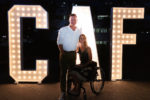

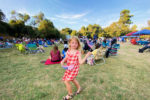
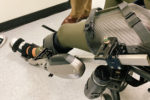
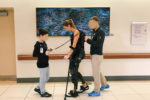

Emily - It’s hard to express how helpful and healing this was for me to read.
I’ve been sick with what we can only really call a chronic response to dengue fever for two years now. Like you, it came without warning. We were serving (religious) overseas in south east Asia, 1 year into an expected 20 year career that would hopefully end with the gospel going to an unreached, remote tribe who had requested missionaries.
I had a 4 year old and a 2 year old.
I ceased being the mom I was to them that day I got sick. Weeks turned into months in bed, sweating through fevers and power outages. The doctors finally said we needed more medical care and to return to America.
Expecting to return a few months later, we brought only one suitcase of clothing. As weeks again turned into months and hours tuned into days in every imaginable doctors office and hospital facility, we slowly were forced to come to grips with the end of our dream.
I lost my identity as a missionary, my purpose and my passion… lost my identity as a mom, serving and cooking and cleaning and all that comes with being a mom to two littles…. lost my identity as a wife… and as an independent and capable person.
We lost all our belongings, all our direction and yet God didn’t lose us in the process. We found many crazy awesome blessings… of course.
But. This post you wrote. It hit me. I never had words for why “it’s so good to see you up and around,” and “it’s so good to see you getting better,” stung. Why sometimes I don’t have the emotional energy to go to church and field the billions of conversations that always center around my health… but not around me as a person, from acquaintances who know my story but are not, like you said, “used to” my sickness.
I was, and continue to use a wheelchair and mobility chair when I shop or travel. I have a handicap placard. I see the glances when I’m riding in a mobility chair as a seemingly young healthy mom, first to my face and then down to my legs. I see the smirks from store clerks when I ask for help. I hear the questions about when I must’ve fallen or why they imagine I’d be in a chair.
Progress is slow, and like you, I have to take each step toward where I was before I got sick with lots of grace and patience.
Anyway. I’ve been following you for a while and I just wanted to say thank you for giving my inner struggles a voice and an explanation.
sharon - Emily my heart goes out to what you have been going through. THANK YOU for sharing your story with me. It feels very vulnerable to put my story out there so hearing that it connected with and encouraged someone else means so much to me! Hearing you resonate with and put into words even more so what I was trying to express encourages me too xoxo
Lara Austin Shoop - Sharon – exactly. Thank you, and Emily (comment above) yes comments sting and the glares, stares and hostility I’ve encountered for using my parking placard are humiliating and enfuriating. “it’s so good to see YOU” is worlds apart from “it’s so good to see out and feeling better” I have 2 chronic progressive autoimmune diseases there is no getting better! I still have good days and the very last thing I want or need, when all my energy is focused on enjoying that time, is to be reminded, even well intentioned, that I’m sick.
thank you xx
sharon - Yes yes yes to all of this friend, love you!
Joanna Lopez - Oh Sharon! Thank you for your vulnerability and for gently reminding us to be aware of others pain, even if it’s not as visible!
Our oldest, who went home to Jesus five years ago (and would now be 20), came to a point with his sickness (DMD) when he was 8, where his leg muscles had tightened so much, there was so much inflamation, and his gait had become so compromised & exaggerated, that he frequently fell, even on flatter surfaces. We knew that a wheelchair was imminent, and at that time, with no experience in that area, the thought seemed so restricting to us.
It was especially difficult for my mom, who had a very close relationship with him as well. I remember quite clearly one day in my parents back yard, when he took another tumble in the grass. We came running to help him up, and he saw the particularly distressed look on my mom’s face. He was always unfailingly optimistic, and quickly encouraged her, “Grammy, don’t worry! At least I won’t fall down anymore, and you won’t have to pick me up!” The wheelchair was freeing for him, because he was finally able to be mobile, move quickly, and keep up with his friends as they walked or ran beside him.
“Ambulating,” while it might have looked more “normal” to others, had become too much for his body to handle. The “abnormal” of a wheelchair brought him freedom until his final flight home into perfect freedom.
It’s a different story than yours, but I can feel a measure of your pain & I can SEE YOU in it!! Thank you for your transparency!! Many hugs from FL!
Joanna
sharon - Joanna thank you so much for sharing the story of your son, and yes although different I relate to what he said and what you shared. Sending lots of love